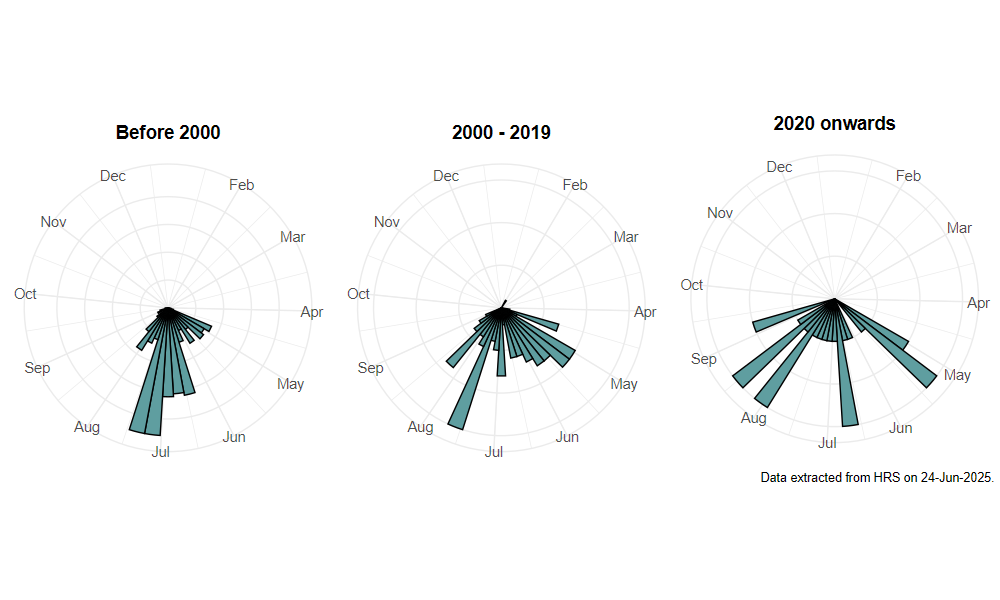Sphaerophoria fatarum Goeldlin de Tiefenau, 1989
Identification
Identification difficulty = 3. ![]()
![]() according to Ball & Morris, 20241
according to Ball & Morris, 20241
Synonymy
Sphaerophoria abbreviata Zetterstedt in Kloet & Hincks (1976)2 and Stubbs & Falk (1983)3 - see Speight (1989)4. The true S. abbreviata is a northern Scandinavian species (Speight, 2017)5.
Biology
Larva unknown. It is usually found in open, heathy vegetation, and in the Scottish Highlands. This is one of the characteristic species of wet areas on open moorland and heathland. It also occurs in heathy rides in conifer plantation and other woodland. Adults are usually found by sweeping, but it will also visit flowers such as Tormentil Potentilla erecta and buttercups Ranunculus sp.
Flight period
The following plots show the number of unique records per week excluding those reported to be of immature stages.

Distribution
This is a frequent species in Scotland and northern England where it is often the commonest member of the genus. It also occurs in Wales and on heathland in southern England, where it is scarce but widely distributed on Calluna heath.

Trends
The following plots show the Frescalo TFactor vs year and a map of the rescaled frequency (all records) for the species.
-
Ball, S., & Morris, R. (2024). Hoverflies of Britain and Ireland. WILDGuides (3rd ed.). Oxford: Princeton University Press. ↩
-
Kloet, G., & Hinks, W. (1976). A check list of British insects. 2nd Ed. Part 5: Diptera and Siphonaptera. Handbooks for the Identification of British Insects, 11, 1–139. ↩
-
Stubbs, A., & Falk, S. (1983). British Hoverflies: An Illustrated Identification Guide (1st ed.). Reading: BENHS. ↩
-
Speight, M. (1989). Sphaerophoria fatarum in the British Isles (Syrphidae). Dipterists Digest (first series), 2, 34. ↩
-
Speight, M. (2017). Species accounts of European Syrphidae ( No. 97). yrph the Net, the database of European Syrphidae (Diptera) (p. 294). Dublin: Syrph the Net publications. Retrieved from https://pollinators.ie/wordpress/wp-content/uploads/2018/05/StN-2017-Species-Accounts.pdf ↩